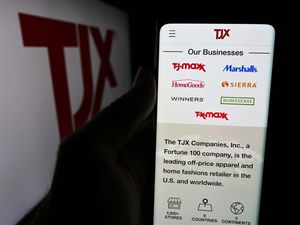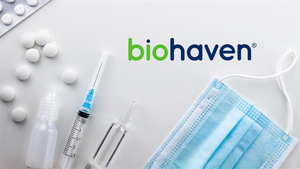- 401(k), 403(b) and IRA Account Balances Increased for Second Straight Quarter
- Employer Contributions Reach Record-High Levels
- Gen Z Women Make Impressive Gains in Retirement Savings Through Significant Increase in Opened Accounts
According to Fidelity Investments’ recent Retirement Savings Assessment, the challenging economic environment, pandemic and market volatility of the last several years has left many Americans households saving less and investing more conservatively. However, with U.S. employers adding one million1 jobs to the economy in the first quarter of 2023, Americans appear to be refocusing on investing in their future, according to Fidelity’s latest retirement trends analysis.
Fidelity Investments, one of the country’s leading workplace benefits providers2 and America’s No. 1 IRA provider3, today released its Q1 2023 analysis of savings behaviors and account balances for more than 44.5 million IRA, 401(k), and 403(b) retirement accounts. The good news is account balances are up for the second quarter in a row due to improving market conditions and an increase in contributions from employers. Additionally, total 401(k) savings rates improved and Gen Z-ers continued to make impressive gains in retirement savings, across both 401(k)s and IRAs.
“We are encouraged to see positive gains for retirement savers, evidenced through rising account balances, improved savings rates, and a commitment by employers – including small businesses – to help employees prepare for the future,” said Kevin Barry, president of Workplace Investing at Fidelity Investments. Americans have experienced some tumultuous years, but through Congress’ investment in retirement savings through the Secure Act of 2019, as well as individuals’ continued commitment to save, we are optimistic for the future of retirement security.”
Highlights from Fidelity’s Q1 2023 analysis include:
- Average retirement account balances increased for the second straight quarter. The average IRA balance4 was $109,000 in Q1 2023, a 5% increase from both last quarter and pre-pandemic levels five years ago. The average 401(k) balance5 increased to $108,200, up 4% from Q4 2022 and 5% from five years ago. For 403(b)s, the average account balance6 increased to $97,900, up 6% from last quarter and a 16% increase from five years ago.
Average Retirement Account Balances
|
Q1 2023 |
Q4 2022 |
Q1 2022 |
Q1 2018 |
Q1 2013 |
IRA |
$109,000 |
$104,000 |
$127,000 |
$106,100 |
$80,700 |
401(k) |
$108,200 |
$103,900 |
$121,700 |
$102,900 |
$81,200 |
403(b) |
$97,900 |
$92,700 |
$107,600 |
$84,000 |
$62,900 |
- Total 401(k) savings rates increased, too. The total savings rate for the first quarter, which reflects a combination of employer and employee 401(k) contributions, improved to 14% (compared to 13.7% in Q4 2022 and 13.8% in Q3 2022), returning to the savings seen at the start of market volatility in Q1 2022 and just below Fidelity's suggested savings rate of 15% (encompassing employee and employer contributions). Boomers still in the workforce continue to save at the highest levels (16.7% versus 16.5% last quarter) and Gen Z saving levels have inched up as well (10.5% versus 10.2% last quarter).
- Employer contributions reach record levels. Part of this success can be attributed to the fact that the average 401(k) employer contribution, which includes profit sharing and matching contributions, reached a record 4.8% in Q1. In addition, more than eight in ten (85%) of workers received some type of employer 401(k) contribution in Q1 and 78% of workers contributed to their 401(k) at a level to allow them to get the full matching contribution offered by their employer.
-
The Gen Z generation7 continues along an upward savings trajectory. Gen Z retirement savers made strong advances on a number of fronts:
- For Gen Zers with a 401(k), the average account balance increased by 17% over last quarter – a slightly smaller increase than the previous quarter (a 23% increase), but still the highest of any age group. Gen Z account balances are up 34% from Q1 2022, making them the generation with the most account growth over the last year.
- Additionally, Gen Z saw a 25% increase in IRA accounts opened in Q1 as compared to a year ago. Gen Z females saw a 22% increase in IRA accounts opened and female Millennials had a year-over-year increase of 19%.
- Overall, the number of IRA accounts continues to increase, especially among young savers. The total number of Fidelity IRA accounts continues to climb, reaching 13.9 million, a 11% increase over Q1 of last year. Additionally, IRA accounts owned by female Millennials6 increased by 19% between Q1 2022 and Q1 2023. Across generations, Roths are the retail retirement savings vehicle of choice, with 58.4% of all IRA contributions going to Roth in Q1 2023.
- Members of the not-for-profit workforce also maintained strong savings rates across genders and generations, with an average savings rate of 11.6%, an increase from 11.4% last quarter.
- Outstanding 401(k) loans and average loan amounts continue to trend downward. The percentage of participants with a loan outstanding dropped to an all-time low of 16.6% for Q1 2023—down just slightly from last quarter (16.7%) and down from 21% five years ago.
“It’s encouraging that today’s younger generations have more financial awareness than any generation before them,” said Joanna Rotenberg, president of Personal Investing. “This financial savvy can pay off in the long run, as making steady retirement contributions can help weather the inevitable financial downturns that will take place over time.”
Changing Jobs? Three Things to Consider.
All of the additions to the job market this quarter also had a positive impact on retirement enrollment, with 575,000 new workers automatically enrolled in their new employer’s plan in the first quarter4. Automatic enrollment allows employers to “automatically” enroll new employees in their workplace savings plan, which can get them saving for the future right from the start.
As employees continue moving between jobs, in addition to automatic enrollment, there are a few things to keep in mind when it comes to securing one’s retirement savings:
- Evaluate your options: Individuals changing jobs will be faced with several options for their existing retirement savings and should consider the benefits of each option before deciding. The decision to leave their savings in their current workplace plan, roll it over to their new employer’s plan, roll it into an IRA or cash out should be based on a variety of factors, including investment choices in their current and new plans, fees and expenses, services, convenience, and when they may need the money.
- Beware of the downsides of cashing out, including taxes and penalties: While each individual situation is unique, workers will want to consider the taxes and penalties that can make cashing out more expensive. Income taxes will be owed on any withdrawals of pretax savings, while any withdrawals prior to a worker turning 59-1/2 could be subject to an additional 10% penalty.
For additional information on Fidelity’s Q1 2023 analysis, click here to access Fidelity’s “Building Financial Futures” overview, which provides additional details and insight on retirement trends and data. In addition, Fidelity also offers a variety of other resources to learn more about retirement planning, including helpful Viewpoints articles such as “How to take control of your retirement” and a new site dedicated to engaging the next generation of investors.
About Fidelity Investments
Fidelity’s mission is to strengthen the financial well-being of our customers and deliver better outcomes for the clients and businesses we serve. With assets under administration of $11.1 trillion, including discretionary assets of $4.2 trillion as of March 31, 2023, we focus on meeting the unique needs of a diverse set of customers. Privately held for over 75 years, Fidelity employs over 70,000 associates who are focused on the long-term success of our customers. For more information about Fidelity Investments, visit https://www.fidelity.com/about-fidelity/our-company.
Keep in mind that investing involves risk. The value of your investment will fluctuate over time, and you may gain or lose money.
Past performance is no guarantee of future results.
Fidelity Brokerage Services LLC, Member NYSE, SIPC
900 Salem Street, Smithfield, RI 02917
Fidelity Distributors Company LLC,
500 Salem Street, Smithfield, RI 02917
National Financial Services LLC, Member NYSE, SIPC,
245 Summer Street, Boston, MA 02110
1089642.1.0
© 2023 FMR LLC. All rights reserved
Follow us on Twitter @FidelityNews
Visit About Fidelity and our online newsroom
Subscribe to emailed news from Fidelity
1 Bureau of Labor Statistics, “The Employment Situation,” January – March, 2023 |
2 Based on PLANSPONSOR Magazine's “2022 Recordkeeping Survey,” June 2022 and “Plan Administration Guide, Part 1” which offers insight into the provider marketplace for defined benefit (DB), stock plan and health savings account (HSA) administration, May 2018. |
3 Based on Cerulli Associates’ Top-10 IRA Providers by AUA, 2Q 2020–2Q 2022. |
4 Fidelity business analysis of 13.9 million IRA accounts as of April 1, 2023. |
5 Fidelity Investments Q1 2023 401(k) data based on 24,800 corporate defined contribution plans and 22.7 million participants as of March 31, 2023. These figures include the advisor-sold market but exclude the tax-exempt market. Excluded from the behavioral statistics are non-qualified defined contribution plans and plans for Fidelity’s own employees. |
6 Fidelity Investments Q1 403(b) data based on 10,172 Tax-exempt plans and 7.9 million plan participants as of March 31, 2023. Considers average balance across all active plans for 5.8 million unique individuals employed in tax-exempt market. |
7 Generations as defined by Pew Research: Gen Z (born 1997-2012), Millennials (1981-1996), Gen X (1965-1980) and Boomers (1946-1964). |
View source version on businesswire.com: https://www.businesswire.com/news/home/20230525005230/en/
Contacts
Contact for Media Only:
Corporate Communications
(617) 563-5800
FidelityMediaRelations@fmr.com
Kristen Andrews
(617) 563-2932
kristen.andrews@fmr.com






